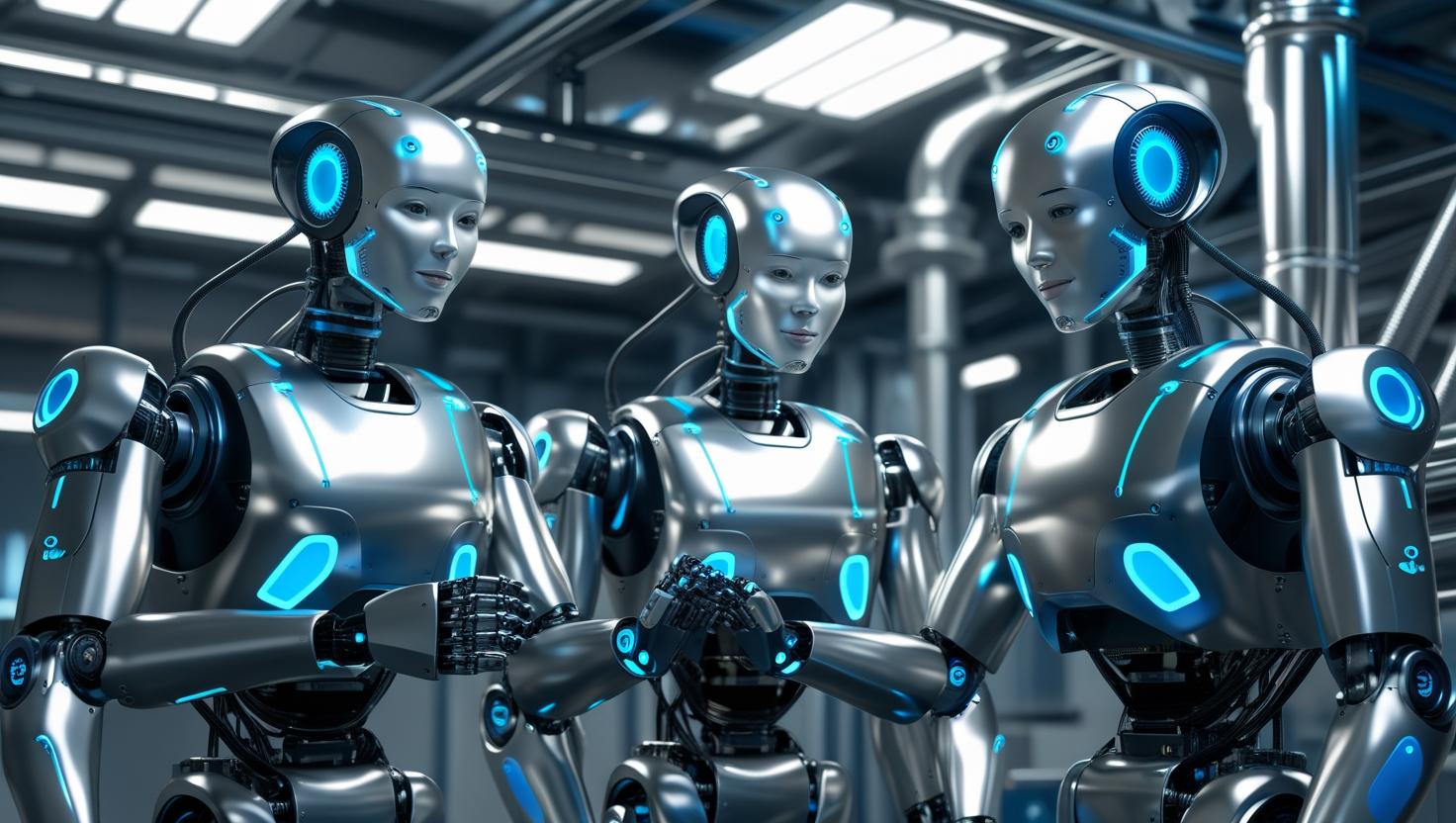The Industrial Autonomous Robots Industry is rapidly transforming the manufacturing landscape. As companies face growing pressure to improve productivity, reduce operational costs, and maintain quality in a globally competitive market, autonomous robots are emerging as a critical solution. These intelligent machines are not only automating repetitive tasks but also enabling smarter, faster, and safer production environments.
What Are Industrial Autonomous Robots?
Industrial autonomous robots are intelligent machines designed to perform complex tasks in manufacturing settings with minimal human intervention. Unlike traditional industrial robots, which are typically fixed and follow pre-programmed instructions, autonomous robots can navigate dynamic environments, make decisions in real time, and learn from data.
These robots often incorporate advanced technologies such as machine vision, AI, lidar, edge computing, and sensor fusion, making them capable of adapting to variable workflows and complex production needs. Applications range from material handling and assembly to inspection, packaging, and warehouse logistics.
Enhancing Manufacturing Efficiency with Intelligent Automation
The Industrial Autonomous Robots Industry is playing a central role in boosting manufacturing efficiency. One of the key advantages is uninterrupted operation. Autonomous robots can work around the clock, eliminating downtime caused by breaks, fatigue, or shift changes. This enables continuous production cycles, significantly improving throughput and overall output.
Additionally, autonomous systems are highly accurate and consistent, reducing errors and improving product quality. By taking over repetitive and dangerous tasks, these robots also enhance workplace safety, allowing human workers to focus on higher-value roles such as maintenance, supervision, and innovation.
Download PDF Brochure @ https://www.marketsandmarkets.com/pdfdownloadNew.asp?id=107280537

Driving Data-Driven Decisions and Predictive Operations
A major differentiator of the modern industrial autonomous robot is its ability to collect and analyze real-time data. These systems can monitor their own performance, detect anomalies, and make predictive adjustments to avoid malfunctions or downtime. When integrated with Manufacturing Execution Systems (MES) or ERP platforms, they provide visibility across the entire factory floor, enabling smarter decision-making.
This level of connected intelligence not only boosts operational efficiency but also supports lean manufacturing initiatives, reduces waste, and shortens time-to-market for new products.
Applications Across Key Industrial Sectors
The impact of the Industrial Autonomous Robots Industry is being felt across multiple sectors. In the automotive industry, robots are used for everything from welding and painting to final assembly and inspection. In electronics manufacturing, they handle delicate components with precision that humans cannot match. In logistics and warehousing, autonomous mobile robots (AMRs) are streamlining supply chains by efficiently transporting goods within distribution centers.
Even small and mid-sized manufacturers are beginning to adopt autonomous systems thanks to the falling costs of robotics hardware and the rise of scalable, cloud-based robot management platforms.
Overcoming Labor Challenges and Scaling Operations
Labor shortages and rising wages are global challenges that are accelerating adoption in the Industrial Autonomous Robots Industry. Autonomous robots provide a scalable alternative to human labor in high-volume or hazardous environments. They can be rapidly deployed, reprogrammed, and relocated, giving manufacturers flexibility to adapt to shifting demand and production requirements.
Moreover, as more facilities implement lights-out manufacturing — fully automated production with minimal human presence — autonomous robots are becoming essential infrastructure in the smart factory of the future.

The Road Ahead: AI-Powered, Self-Optimizing Systems
Looking ahead, the Industrial Autonomous Robots Industry is poised for significant growth through 2030. With continuous advances in AI, 5G, edge computing, and sensor miniaturization, the next generation of autonomous robots will be even more capable, collaborative, and efficient.
We are moving toward a future where robots not only perform tasks but learn, adapt, and optimize themselves in real time — a shift that will redefine what manufacturing efficiency means in the age of Industry 4.0.
The Industrial Autonomous Robots Industry is not just a trend; it is a foundational pillar of the future of manufacturing. By automating workflows, enhancing productivity, and enabling data-driven decision-making, industrial autonomous robots are driving a revolution in operational efficiency. For manufacturers looking to stay competitive in the global market, investing in intelligent automation is no longer optional — it’s essential.
FAQ: Industrial Autonomous Robots Industry
1. What are industrial autonomous robots?
Industrial autonomous robots are intelligent machines capable of performing tasks in manufacturing and industrial environments with minimal or no human intervention. They can navigate dynamic spaces, adapt to changing environments, and make real-time decisions using technologies like AI, machine vision, and sensors.
2. How are autonomous robots different from traditional industrial robots?
Traditional industrial robots are usually fixed in one location and operate based on pre-programmed instructions. In contrast, autonomous robots are mobile, intelligent, and adaptable. They can navigate, interact with their environment, and update their behavior based on data input — enabling greater flexibility and productivity.
3. What industries are adopting industrial autonomous robots?
Industrial autonomous robots are being adopted across:
- Automotive (assembly, welding, inspection)
- Electronics (precision assembly, testing)
- Logistics & Warehousing (goods transport, inventory management)
- Pharmaceuticals (material handling in sterile environments)
- Food & Beverage (packaging, sorting)
- Heavy Industry (machining, maintenance tasks)
